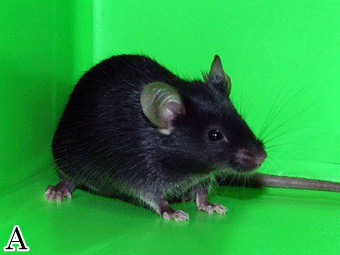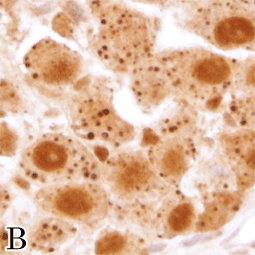
Atg5: An essential molecule of autophagy
Null and conditional knockout mice to study the role of autophagy
Atg5 autophagy-related 5 (Chr 10)
|
 |
 |
| A. The floxed Atg5 knockout mouse with the C57BL/6JJmsSlc background. |
B. The characteristic phenotype detected as cytoplasmic granules stained by anti-ubiquitin antibodies in the dorsal root ganglion neurons. Neuron-specific Atg5 knockout mice were generated by crossing the floxed Atg5 with the nestin-Cre transgenic mice. |
Autophagy is an intracellular degradation process by an autophagosome which contains a portion of cytoplasm and subsequently degrades upon fusion with a lysosome. Autophagy is considered to be important for the cellular response to starvation and the normal turnover of cytoplasmic components as well. Atg5, autophagy-related 5 is essential for autophagosome formation. B6;129-Atg5tm1Nmz (RBRC 02231) with a null allele of Atg5 and B6.129S-Atg5tm1Myok (RBRC 02975) with a conditional floxed allele of Atg5 have been generated to study the physiological role of autophagy in mammals. Autophagy has been demonstrated to play an important role to maintain an adequate amino acid pool at early neonatal stages until the nutrient supply from milk. Homozygous Atg5-deficient null mice (RBRC 02231) die during the early neonatal period due to a lack of nutrients. Conditional B6.129S-Atg5tm1Myok (RBRC 02975) mice can be crossed with various tissue-specific Cre transgenic mice to study the role of autophagy in adult tissues.







